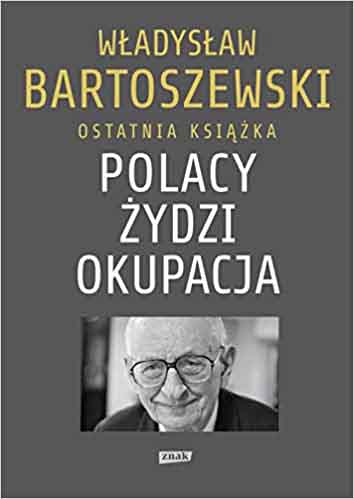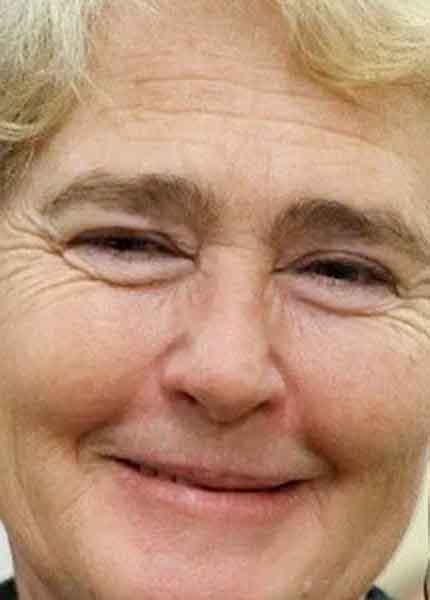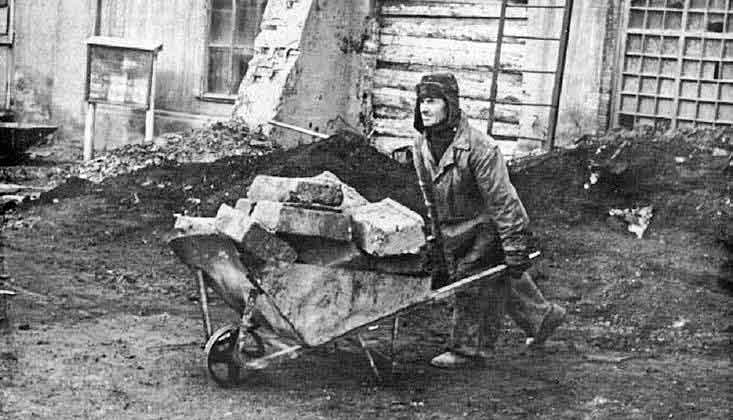“There was almost no religious congregation in Poland that did not encounter the issue of helping Jews in hiding, mainly women and children, during the occupation, even though the pressure from the Gestapo and the surveillance of monasteries were very strong, and the forced resettlement of religious houses, arrests and deportations to concentration camps seriously hindered underground activities,' wrote Władysław Bartoszewski in his last book Poles. Jews. Occupation.

The cover of "Polacy, Żydzi. Okupacja." by W. Bartoszewski (Source: Amazon.com)
One of the greatest historians of the Second World War summarizes his long research work in this book. But his conclusions are also confirmed by surveys conducted in 1962 and 2009 in women's congregations, as well as individual research - nuns risked their lives to save Jewish fellow citizens from death.
A long list of rescuers
In the country, conquered after the defensive war in 1939, terror against Poles was growing (murdering the intelligentsia), but especially against their Jewish fellow citizens. Jews were ordered to wear armbands, their property was confiscated and they were locked up in ghettos. On October 15, 1941, Governor General Hans Frank issued an ordinance introducing the death penalty for Jews leaving the ghettos. For helping Jews, even for giving a slice of bread, a glass of water, or medicine, whole families were threatened with immediate death. In 1942, the liquidations of ghettos and deportations to extermination camps began.
In the face of mortal danger, many nunneries became real places of salvation for their Jewish fellow citizens. The nuns had conditions for this, because their houses were often located on the outskirts of cities or in villages, outsiders were not allowed to enter the enclosure, infirmaries were carefully avoided by the Germans because they were afraid of infectious diseases, there were also outbuildings surrounded by orchards and vegetable gardens. The nuns, who from the beginning of the war took care of the poor, refugees, people deprived of homes and joined the underground struggle and clandestine teaching, quickly realized that it was an equally urgent task to help the persecuted Jews.
This help was diverse, it consisted in providing food, medicines, clothes, providing shelter for several days or lasting many months, even years. Many of these people came to the nuns by chance. Like a little boy thrown out of a transport to Auschwitz, who was taken care of by the sisters of the Congregation of the Benedictine Samaritan Sisters in Henryków. Tadeusz, because that was the name he received from his new caregivers, was wrapped in pillows, so he was not injured and luckily survived until the end of the war. The Starowiejskie Servants from Piotrków Trybunalski took care of a few-month-old boy and also effectively protected him; after the war his parents came forward and left with him for Palestine. The Michalitki nuns from Radom - their monastery was adjacent to the ghetto - gave food to Jewish children.

Nuns and Jewish children (Source: DlaPolonii.pl)
Sister Antonina Jaworska from the Sacré Coeur Congregation in Zbylitowska Góra gave Jews food, which she hid under her apron. When Sr. Antonina Bulczak from that congregation, working in the hospital in Lviv, gave a Jew a piece of bread, she was almost shot. The Hospital Franciscan Sisters from Ludwikowice, who ran an old people's home, showed great energy and determination - they dug a hole under the ghetto fence and gave food to the imprisoned.
Nuns most often took care of children, but also adults. Benedictine nuns – Samaritans from Henryków – hid sixteen adult Jewish women in the enclosure. Maria Kiepura, the mother of the world-famous tenor, "a boy from Sosnowiec", Jan Kiepura, was hiding in the convent of the Felician Sisters in Kraków.
The enclosure was also a place of refuge for the Horn family in the convent of the canonesses of the Holy Spirit in Lublin, and when they were arrested and imprisoned in Majdanek, Sister Alojza Truszkowska got them out of the camp because she showed the Germans a certificate that they were employees in the convent. The whole family survived the occupation.

Smoke rising from the camp Majdanek, 1943. (Source: Wikipedia)
Unfortunately, not all stories ended successfully. The nuns from the Congregation of the Immaculate Conception of the Blessed Virgin Mary - Sr. Ewa Noiszewska and her superior Marta Wołowska - hid the Kagan family in the attic, orangery and stable of the monastery in Słonim, treated Jews, and Sr. Ewa, a doctor by profession, wrote out prescriptions for them. It was the prescription that led the Germans to the trail of help - one of the men they murdered had a prescription written by a nun in his pocket. Both virgins were murdered in December 1942 with a shot to the back of the head.
In the Carmelite convent at ul. Wolska in Warsaw, located near the ghetto walls, the nuns helped "as usual", donating food and medicines, as well as false documents, thanks to which it was possible to survive on the Aryan side. The monastery was also a clandestine place on the Aryan side for the liaisons of the Jewish underground - Ari Wilner, Tuwa Szejngut and others. "Seventeen sisters lived in 1942-43 in constant danger, not evading cooperation in even the most risky undertakings" - states Władysław Bartoszewski in the already quoted book. Most of them, nearly five hundred children and about two hundred and fifty adults, were saved by sisters from the Congregation of the Franciscan Sisters of the Family of Mary in Warsaw.
Nuns ran orphanages, and during the occupation they even set up new ones. Superior General Ludwika Lisówna and the Superior of the Warsaw Province Matylda Getter organized a systemic action to save Jews. Mother Matilda collaborated with the director of the children's section of the Council to Aid Jews, Irena Sendler from Żegota, with the ghetto priest, Monsignor Marceli Godlewski, and with the charity activist Izabela Radziwiłłowa. Children smuggled out of the ghetto were placed in the facilities of the assembly or handed over to Polish families.
Mother Matylda, although she was almost seventy years old at the outbreak of the war, did not stop at life-saving activities. "Whoever comes to our yard and asks for help, in the name of Christ, we must not refuse," she said. Sr. Teresa Antonietta Frącek, historian and archivist of the congregation, calculated that more than one hundred and twenty sisters from the congregation were involved in the rescue work, i.e. every tenth. The action was organized perfectly - all the people cared for by the assembly luckily lived to see the end of the war.
The nuns operated in an atmosphere of constant threat, German searches were very frequent, and native szmalcowniks circulated around the monasteries, blackmailing people who saved Jews.
Strategy
The list of rescuers is very long. It must be remembered that the rescuer took responsibility for human existence, and for the project to succeed, she had to take a number of steps. In this fight, the nuns showed extraordinary creativity, cold blood, and sometimes disobedience. The first step was to "legalize" the hidden person, i.e. to develop a false identity. Cooperation with priests was invaluable, as they were the ones who issued baptismal certificates. In the Park of Remembrance in Toruń, there are testimonies about about six hundred and sixty priests who joined the rescue operation. Many nuns learned to forge Aryan documents, aging them with lamps.
Children, hidden in orphanages among Polish peers, had to be taught prayers, participation in the Holy Mass, rhymes. Their hair was dyed, and when a search was expected, the sisters bandaged the faces of the pupils with clear Jewish features or did not let the Germans into the infirmary, claiming that there were people suffering from infectious diseases there.

The entrance gate at Auschwitz. (Source: Wikipedia)
Also religious habits protected against exposure. Eugenia Szymańska, disguised as a postulant of the Benedictine Samaritan nuns, worked in the railway workshops in Pruszków, supervised by the Germans. Hiding in an institution for boys in Białołęka, Fr. Tadeusz Puder also put on the habit at the time of greatest danger, thanks to which he survived.
Why did they save?
The moral attitude of the nuns was all the more beautiful because they were not interested in gaining new followers for the Church, but in saving human lives. Baptism was very rare, only at the request of a few older children, and only after a long catechetical preparation. "I remember Sister Stefania's attitude towards these matters: how greedy she was to save, how eagerly she accepted every Jewish baby to the institution," writes Władysław Bartoszewski in his book Poles. Jews. Occupation.
Numerous testimonies show that the nuns were inspired by the Gospel, the words of Christ, who says that "there is no greater love than this, that a man lay down his life for his friends." Mother Matilda was guided by a fragment of the Gospel of St. Matthew, expressing the charism of her congregation: "Whoever welcomes one of these children in My name welcomes Me." She trusted that Providence watches over every member of the household. During the revision, the sisters prayed in the convent chapels. Mother Matylda used to say to her sisters: "We are saving a man".
They risked their lives in the name of human solidarity.
Translation from Polish: Andrew Woźniewicz.





